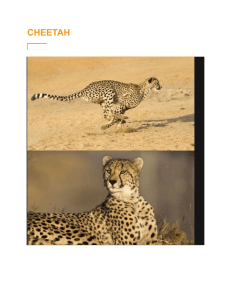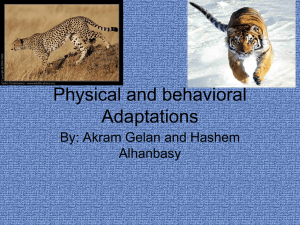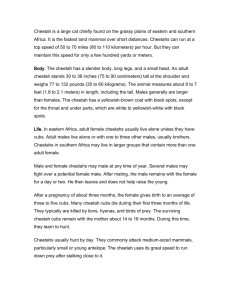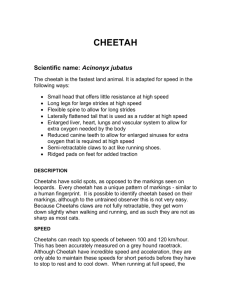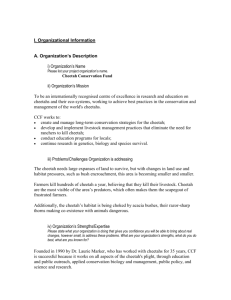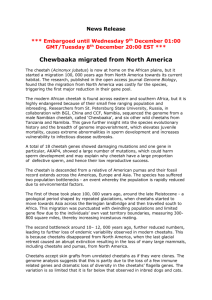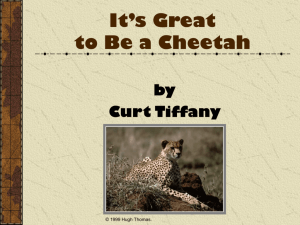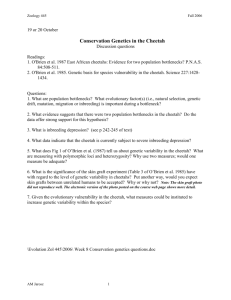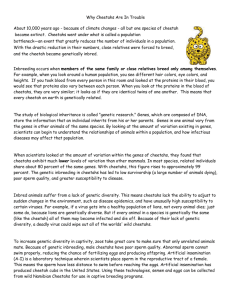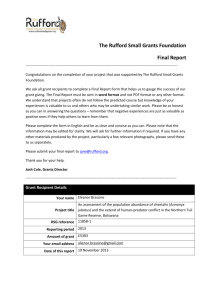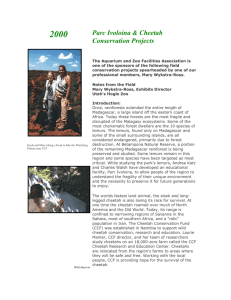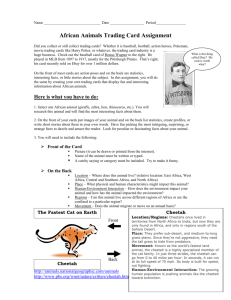File - RUDERT / Fancher
advertisement
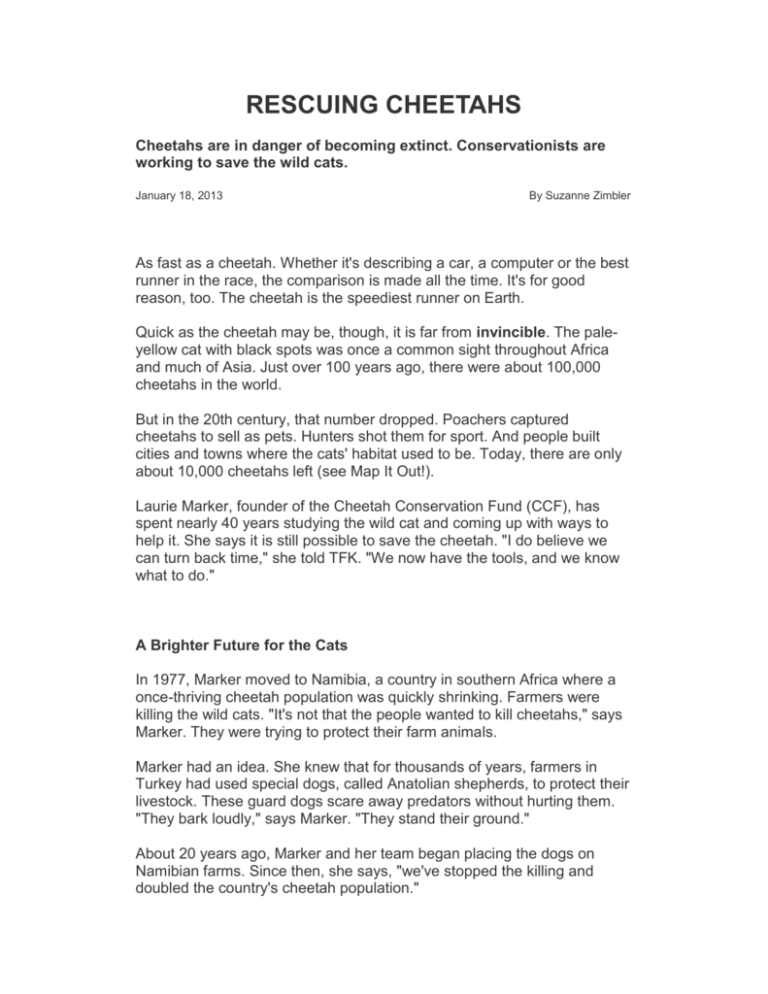
RESCUING CHEETAHS Cheetahs are in danger of becoming extinct. Conservationists are working to save the wild cats. January 18, 2013 By Suzanne Zimbler As fast as a cheetah. Whether it's describing a car, a computer or the best runner in the race, the comparison is made all the time. It's for good reason, too. The cheetah is the speediest runner on Earth. Quick as the cheetah may be, though, it is far from invincible. The paleyellow cat with black spots was once a common sight throughout Africa and much of Asia. Just over 100 years ago, there were about 100,000 cheetahs in the world. But in the 20th century, that number dropped. Poachers captured cheetahs to sell as pets. Hunters shot them for sport. And people built cities and towns where the cats' habitat used to be. Today, there are only about 10,000 cheetahs left (see Map It Out!). Laurie Marker, founder of the Cheetah Conservation Fund (CCF), has spent nearly 40 years studying the wild cat and coming up with ways to help it. She says it is still possible to save the cheetah. "I do believe we can turn back time," she told TFK. "We now have the tools, and we know what to do." A Brighter Future for the Cats In 1977, Marker moved to Namibia, a country in southern Africa where a once-thriving cheetah population was quickly shrinking. Farmers were killing the wild cats. "It's not that the people wanted to kill cheetahs," says Marker. They were trying to protect their farm animals. Marker had an idea. She knew that for thousands of years, farmers in Turkey had used special dogs, called Anatolian shepherds, to protect their livestock. These guard dogs scare away predators without hurting them. "They bark loudly," says Marker. "They stand their ground." About 20 years ago, Marker and her team began placing the dogs on Namibian farms. Since then, she says, "we've stopped the killing and doubled the country's cheetah population." Another major challenge facing cheetahs is habitat destruction. When farmers keep too much livestock in the same place for too long, overgrazing occurs. Without grass to eat, many wild animals—including those that the cheetah preys on—cannot survive. And the cheetah too is left without a meal. In Namibia, CCF is teaching farmers how to take care of their livestock without harming the land. The organization has worked with more than 3,000 farmers. "Our farmers are very interested," says Marker. "They want that information." The goal, Marker says, is for people, livestock and wild cheetahs to live in harmony. "That's my vision," she says, "and it's doable." WORDS TO KNOW: invincible : too strong to be defeated overgrazing : to allow animals to feed to the point of damaging plant life
